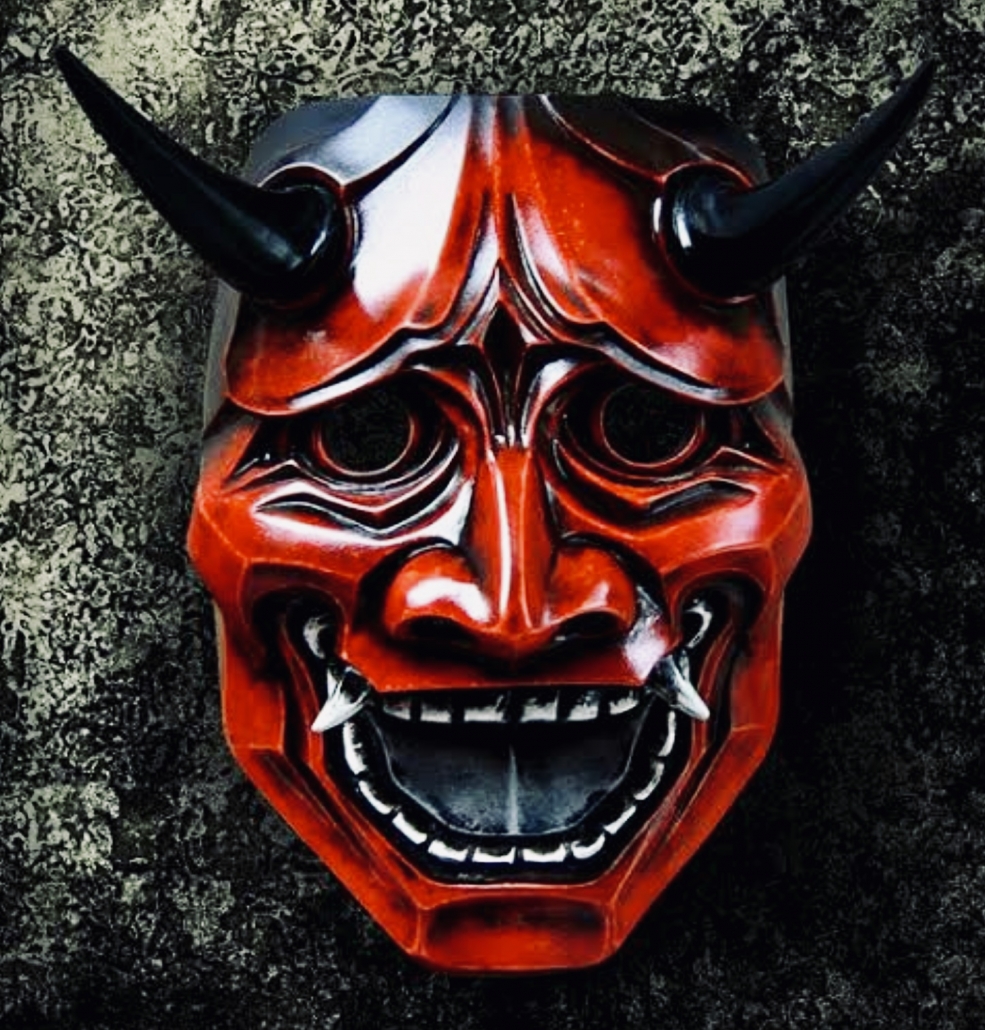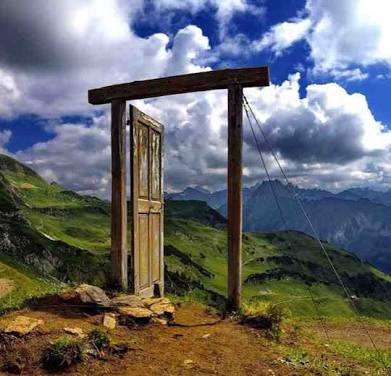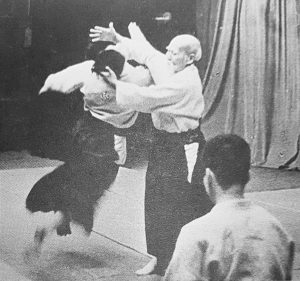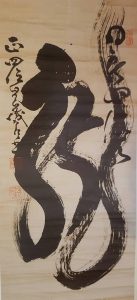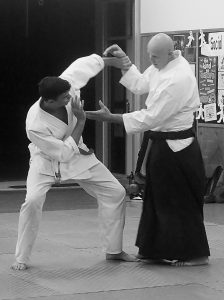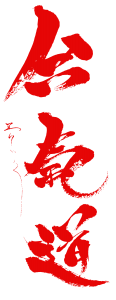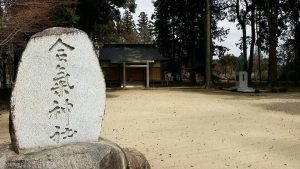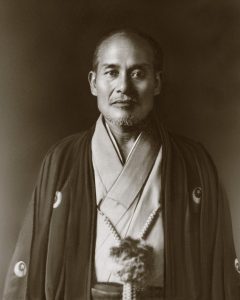 “To become poisoned by secret teachings is something that occurs in Aikido as well. Instead of looking at their feet (“The feet reveal the secrets of the universe.”Morihei Ueshiba), people look up and imitate sophisticated movements in a pretentious, empty manner. That is called “to be poisoned by secret teachings”. This is quite rife in Aikido.”
“To become poisoned by secret teachings is something that occurs in Aikido as well. Instead of looking at their feet (“The feet reveal the secrets of the universe.”Morihei Ueshiba), people look up and imitate sophisticated movements in a pretentious, empty manner. That is called “to be poisoned by secret teachings”. This is quite rife in Aikido.”
Hiroshi Tada Shihan.
There is a huge push on the fringe of the Aikido community in regards to the founders Aiki and internal power. Now, before I go any further I want to state that I believe in many of the concepts that have been suggested, including those(especially those) relating to body connection and relaxation. I have also read with great interest in regards to those Shihan that may have inherited this “Aiki”. One that is put forward and validated by those that knew him was Koichi Tohei, 10th Dan and heir apparent to the technical Aiki of the founder.
I have no doubt that Tohei was amazingly connected as a martial artist, but I have a different theory as to what it was that gave Tohei his amazing ability, this theory has been built up through transmissions from his senior student, instructor and one time heir, Koretoshi Maruyama, who coincidentally was a student of the founder of Aikido for 13 years.
I posted the above quote for a particular reason, because hidden in plain sight secrets like Aiki have been promoted by men that have a vested interest in convincing you that what they do is what Ueshiba did(without actually knowing him by the way), and constantly accuse those that don’t possess what they have(or do) as not doing the founders Aiki.
There is much evidence to say that, over time, the founders idea of Aikido changed. Shirata Rinjiro (who by the way, is a champion of the “Aiki”/IP crowd) stated in his interview with the late Stan Pranin of Aikido Journal that the founders Aikido changed after the war, as did Michio Hikitsuchi, 10th Dan.
The founder himself left this cherry for us to chew on.
“As Ai harmony is common with Ai love, I decided to name my unique budo Aikido. Although the word Aiki is an old one. the word which was used by warriors in the past is fundamentally different to that of mine.
Aiki is not a technique to fight with or destroy an enemy. It is a way to reconcile the world and make human beings one family.”
I know this one has also been deflected by those who never actually knew the founder, but, it’s pretty clear what is being stated here. He has a new version of Aiki, one that doesn’t involve overcoming an opponent, one for not fighting, one that doesn’t destroy.
I struggled with this concept for a while, until Maruyama Sensei (and I have since found out he is not the only Shihan giving value to this concept), mentioned the highest level of shinken shobu was represented by the concept of “ai-nuke”, mutual passing through, a fight to the death, where both combatants life was spared. Slowly the threads started to fall into place.
I have stated elsewhere I am a student of history, it was my major in Uni, and has been a passion of mine my entire life. Now, the study of history is about creating, or recreating an idea by finding the common thread, looking at the evidence objectively from both, or all points of view, this if you will was my final piece of the puzzle to state my case for Aikido beyond all duality, based on the sword as the founder intended, and not on some ancient internal body function designed to defeat an opponent.
“If you eliminate the impossible, whatever remains, however improbable, must be the truth” – Spock
The concept of ai-nuke comes from Mujushin Ryu(the sword school of no abiding mind) kenjutsu, who’s founder, Sekiun Goroemon Harigaya came to understand that the study of the sword for any violent purpose opposed the order of the universe, and so developed a sword style that had as its sole purpose, discovering, or more importantly, rediscovering the truth of no man, no sword, no opponent. Kenjutsu in the Mujuu style is not at all about winning and losing, beating or being beaten, in fact is not about conflict at all: it’s a flowing movement of breath, spirit and power. (Does this concept sound at all familiar).
At its ultimate level, the study of the sword was about the study of the spirit of man, not about overcoming an adversary, but about overcoming ourselves(masakatsu agatsu, katsu hayahi…..Morihei Ueshiba).
A few hundred years into the future, and after the demise of the mujuu style of swordsmanship after just a few generations(not a practical sword style for battle hardened Japanese samurai), and we have to look at another great swordsman of peace that trained and followed the ancient ways of sword, Yamaoka Tesshu. Without going into his life story, a student of Itto Ryu(same sword school as Sokaku Takeda, O-Sensei’s teacher) came to the realisation, without ever having killed an opponent, that there existed under heaven no sword, no man, no enemy, and named his sword school muto ryu. In a way, bringing back to the world the study of the sword that gives life(katsujinken) in the same style and philosophy as Mujushin Ryu;
“the basis of true training is to forge the spirit(seishin no shugyo).
Our primary purpose is to face our opponents without the slightest openings.
Openings means: wishing to do technique on an opponent while avoiding their technique.
Such a state of mind is delusional..
When confronting an opponent, thoughts of striking or being struck indicate ignorance and illusion…
Maintain the principle of “no-mind” and you will lack nothing.
This is a natural, marvelous principle.
To not use discriminatory thought will result in absolute victory.
Swordsmanship consists of utilizing no-form within form to achieve true victory”
Tesshu Yamaoka
Few were able also to follow the severe training(Shugyo) traditions layed down by Tesshu, including many of his students, but one, wishing to continue passing on the essence of what Tesshu had rediscovered in his sword school, but realising most normal men couldn’t endure such physical hardship, founded instead an organisation that became synonymous with Aikido Shihan, the ichikukai.
Here is where this theory really starts to gather traction. Famously, 10th Dan in Aikido, and apparent exponent of Aiki didn’t study Daito Ryu secret techniques at all, but rather, forged his mind at the crucible of Tesshu Yamaoka, and apparently also found within himself something of the concept of no me, no sword and no enemy, the concept that the founder of the ichikukai so desperately wanted to hand on to his students. The problem we have here is we are not talking about physical technique that can be taught to overcome an opponent, but rather, elevation of the spirit, so that one can begin to understand the unity of all things, Kiriotoshi the most important concept in itto ryu has as its foundation exactly this principle, one is all, all is one.
Now, I know there will be those that will argue the point here, sure, no worries. But there are stories of Tesshu, who never studied Daito Ryu at all displaying easily such concepts as body of stone, or fudoshin body- immovable body, so there was some concept he gleaned from his years of arduous training that gave him such a power. I would say that no man, no sword no enemy gives one such an understanding.
During the most recent seminar, when sensei spoke of these concepts such as ai-nuke, Sensei said it’s no good just to work on the spirit side of things, but that a warrior, a true warrior had to balance equal parts technical ability, and spiritual awareness, that these things were mutually complementing, not mutually exclusive, that training the body(tanren) and training the spirit were two sides of the same coin – according to the founder;
(…) The work of the internal divinity, making the body an organ of creation will realize misogi by the body. — Takemusu Aiki, Volume II
To unite the world of light, a body of flesh is given.
— Takemusu Aiki, Volume II
Me, Ueshiba, I need to train more. (…) I can not show the way to people if I do not stand on the Floating Bridge of Heaven. I can only teach through practice.
— Takemusu Aiki, Volume III
So we work on technique to elevate and become aware of spirit. Body and spirit together as a path to understanding and fulfilling our purpose as human beings, the very definition of unconditional love.
Coming back to our concept of ai-nuke, it became a very important concept in Zen, so much so that Omori Roshi, under guidance from Daisetz SUZUKI spoke these words.
“Harigaya Sekiun created the term Ai-nuke to describe his condition attained through sword. It is the world of ABSOLUTE PEACE THAT TRANSCENDS WINNING AND LOSING.(sound familiar again……). It is a different dimension from aiuchi.
WE SHOULD CONSIDER IT A CRUCIAL TREASURE LEFT BY A MAN OF ANCIENT TIMES………………….you must transcend dualism and enter into the realm of Ai-nuke.
But there is a problem.
It is no good just to INTELLECTUALISE the concept of Ai-nuke.
This is a very important point.
If you do not have the background and strength of aiuchi, you cannot enter the realm of Ai-nuke…………if you have not mastered aiuchi, it is impossible to learn Ai-nuke”
So here comes the difficult part. Training. The founder stated:
“You have to be willing to accept 99% of the attackers force before the mysteries of AIKI can be revealed” And also “To train in the basics is to practice the very secrets of the art.”
There are also concepts that these interactions are suppose to teach us, if as trainees we are able to fulfil our roles seriously, with sunao, earnest respect, such as what kotodama represents in the concept of the founders Aikido, and why it was important,
“Kotodama is mistakenly thought to be sounds, but in Aikido, kotodama is yamabiko no michi (the way of the mountain echo), it is the resonance of ki that precedes the emergence of sound. Subtle changes in these echoes become the mysteries of all creation. When two forms of Ki combine it becomes kokyu.”
Shihan Shirata Rinjiro
Here we have mountain echo, another IP concept, reimagined by Shirata as a ki concept, so we start to get an idea of another of the founders concepts, ki-gata.
Here we go again, this quote tying a lot together in what I am saying in this post,
“The aikido which I am doing now is a path that builds people A WAY OF FORGING AND TEMPERING THE BODY AND SPIRIT (this is TANREN).
It is not a way that injures others, nor is it one that wields against them the evil sword of death.
I humbly ask that you, too, give deep thought to these considerations.
The training in Aiki concerns itself most with the practicing of KI-GATA(the forms and movement of Ki) and the method of perfecting them.
The most important element in true Ki-gata is the quality of shinken shobu(quite literally a fight to the death with real swords – it implies a certain seriousness of your attitude whilst training).”
Morihei Ueshiba
Hard training in basic waza leads us to building an Aiki body. Study of the basic movement of the sword teaches us about our spirit, study and continuous practice of ukemi teaches us about death and rebirth, and also gives us a vehicle to misogi harai. All of these together, practiced daily, as the founder intended are tanren, the forging of the spirit through the body. And continuing these basics, such as suburi, kokyu ho and funekogi will lead you to a deep awareness of ai-nuke. Not one concept forsaken, not one moment wasted, a lifetime devoted to overcoming self.
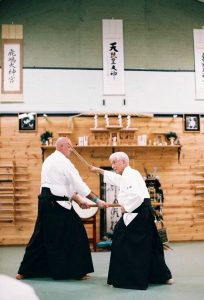
So let’s summarise . O-Sensei, a spiritual and martial giant studied many ancient forms of fighting and came to the conclusion that Aikido was a way to achieve spiritual awareness through hard physical training, this is backed up by another martial giant, Yamaoka Tesshu who came to exactly the same realisation.
O Sensei was as deeply spiritual a person as his violent teacher sokaku Takeda was not. O Sensei and his Aikido were profoundly influenced by his spiritual practice, omoto kyo. O Sensei having studied Aiki under Takeda rejects his Aiki as just another way of fighting to defeat an opponent, and with sword in hand, hides himself away in Iwama, and discovers like Tesshu and Harigaya before him that the spirit of true budo is that of love, of oneness with the universe, of no me, no sword and no enemy. This realisation elevates his ability beyond Aiki. He chooses as his successor a man that also has been drilled in this concept, Tohei Sensei, who learnt these very concepts at the foot of the student of Yamaoka Tesshu at the ichikukai. That true Aikido is Ai-nuke, not fighting but passing through, not avoiding the conflict, but with the universe as his ally, controlling space and time, and conflict outside physical parameters.
But that coming to such a realisation takes great work and sacrifice, death even, a willingness to sacrifice all to find this way.
As I stated earlier, I do not reject the ideas that internal power brings to Aikido, the coordination of body that it takes to understand how these things work brings a strong understanding of how we function on a physiological level as efficient human beings, but I would argue that the concept of Aikido that the founder saw in his latter days had more to do with the concept of the spirit than that of an efficient body.
I leave the argument now. In my heart there is no argument, I leave with a quote from Tesshu Yamaoka’s master,
“No man can defeat another of superior virtue”
Thanks for your time
“In the past martial artists were serious, their resolution was absolutely sincere, they worked soundly on technique and where neither daunted nor lazy.
Such men believed what their instructors passed on to them, made great efforts day-and-night, tested their techniques, spoke with their friends about their doubts, mastered what they studied and awaken themselves to principles.
For this reason what they acquired penetrated deeply within them.
At first their instructors would teach them techniques but say nothing of the principles that were hidden within them.
They only waited for the students to uncover those principles by themselves.
This is called drawing the bow, but not releasing the arrow.(teaching the way to achieve their own understanding, not the actual understanding)
And it’s not that they spoke grudgingly they simply wanted this students to use their minds and to master what they were studying in the interval.
Disciples would thoroughly exert their minds and make great efforts.
If there was something they understood on their own they would still go and confront the teacher; and he would acknowledge their understanding when their minds were in accord.
If the teacher released the arrow nothing would be learned and this was not just in the martial arts. (I.e. The understanding had to come from the student, not be taught to the student)
Confucius said
“I am not going to go on with the fellow who does not respond my lifting up 3 corners when I have already lifted up one”(this means the teacher should only impart one quarter of the puzzle, the student then exerts themselves to discover the other three quarters)(steal the technique)
This was the teaching method of the men of old.
In this way the students were sure to be serious whether in scholarship or in martial arts.
Now a days people are shallow and their resolution is not in earnest.
They dislike the strenuous and love the easy from the time they are young.
When they see something vaguely clever they want to learn it right away; but if taught in the manner of the old ways, they think it not worth learning.
Now days, the way is revealed by the instructor, the deepest principles are taught even to beginners, the end result is set right out in front and the student is led along by the hand.
Even with methods like these students become bored and many of them quit.
In this way, talking about principles takes the high seat, the men of old are considered inadequate, mastery becomes watered down and students only make effort in things that might have them “climb to new heights”.
this is again the spirit of The Times ………….”
Issai Chonzanshi (1659-1741)
********* I would like to acknowledge a few reference materials, first and foremost the writings of Ellis Amdur, who’s rewritten copy of Hidden in plain sight constantly nagged at my subconscious,
Also the truth of the ancient ways, by Anshan Anatoliy
Omori Sogen,the art of a zen master
http://www.spookhouse.net/angelynx/comics/no-abiding-mind.html
https://www.guillaumeerard.com/aikido/interviews/interview-with-tada-hiroshi-shihan
http://www.aikidotakemusu.org/en/rubriques/163
Aikido Masters – Prewar Students of Morihei Ueshiba, by Stanley Pranin

